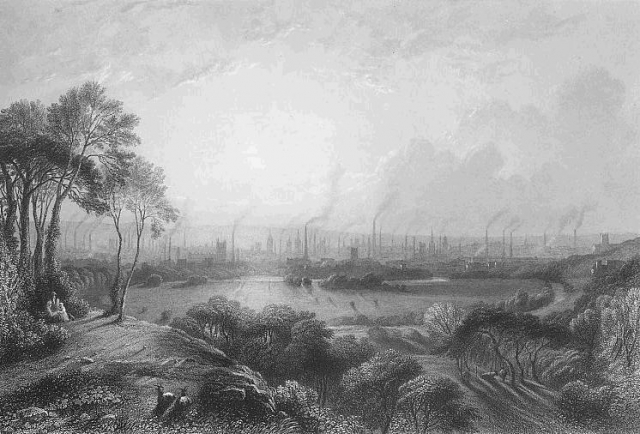‘The cradle of the Industrial Revolution’
Historian article

Landscapes of early textile Lancashire
Michael Winstanley challenges assumptions about Lancashire's new industrial landscape, inviting us to re-imagine what Manchester and the country around it looked like.
Lancashire, especially the cotton textile district to the east of the county, is widely regarded as the ‘cradle of the industrial evolution’. But what did this burgeoning industrial landscape actually look like in the early nineteenth century? To what extent is it possible to see what its inhabitants saw?
In the era before photography, images of the region have to be reconstructed from contemporaries’ descriptions or a limited number of prints and paintings. It is easy to be influenced by Dickens’ grim portrayal of ‘Coketown’, Engels’ powerful critique of Manchester, later photographs of huge mills and densely packed terraces and W.S. Lowry’s evocative paintings. But curious visitors came to witness this new industrial society themselves, especially ‘Cottonopolis’ or Manchester. Some came to admire. Prince Albert, who accompanied Queen Victoria on a visit in October 1851, had extolled the triumph of industry in a speech the year before as ‘fulfilment of that great and sacred mission’ whereby man ‘himself a divine instrument’ applied ‘the laws by which the Almighty governs His creation’ to ‘conquer nature to his use’. Others were more critical. Alexis De Tocqueville, visiting Manchester in 1835 could find little to recommend it: a ‘damp, dark labyrinth where the sun was a disc without rays’. Yet, as the German visitor, Johann Georg Kohl noted in England, Wales and Scotland (1844), ‘It cannot be said that Manchester is either an ugly or a beautiful town, for it is both at once’...
This resource is FREE for Historian HA Members.
Non HA Members can get instant access for £2.49


